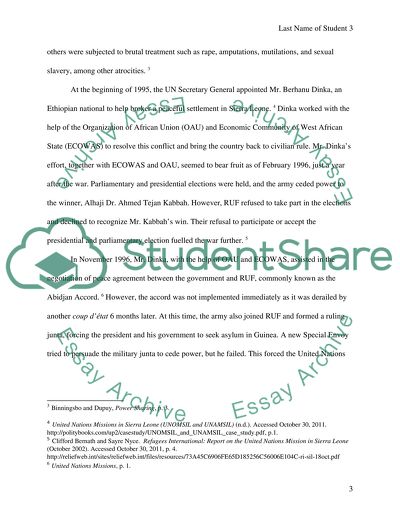Cite this document
(“The United Nations Mission In Sierra Leone Essay”, n.d.)
Retrieved from https://studentshare.org/history/1434462-the-united-nations-mission-in-sierra-leone
Retrieved from https://studentshare.org/history/1434462-the-united-nations-mission-in-sierra-leone
(The United Nations Mission In Sierra Leone Essay)
https://studentshare.org/history/1434462-the-united-nations-mission-in-sierra-leone.
https://studentshare.org/history/1434462-the-united-nations-mission-in-sierra-leone.
“The United Nations Mission In Sierra Leone Essay”, n.d. https://studentshare.org/history/1434462-the-united-nations-mission-in-sierra-leone.


